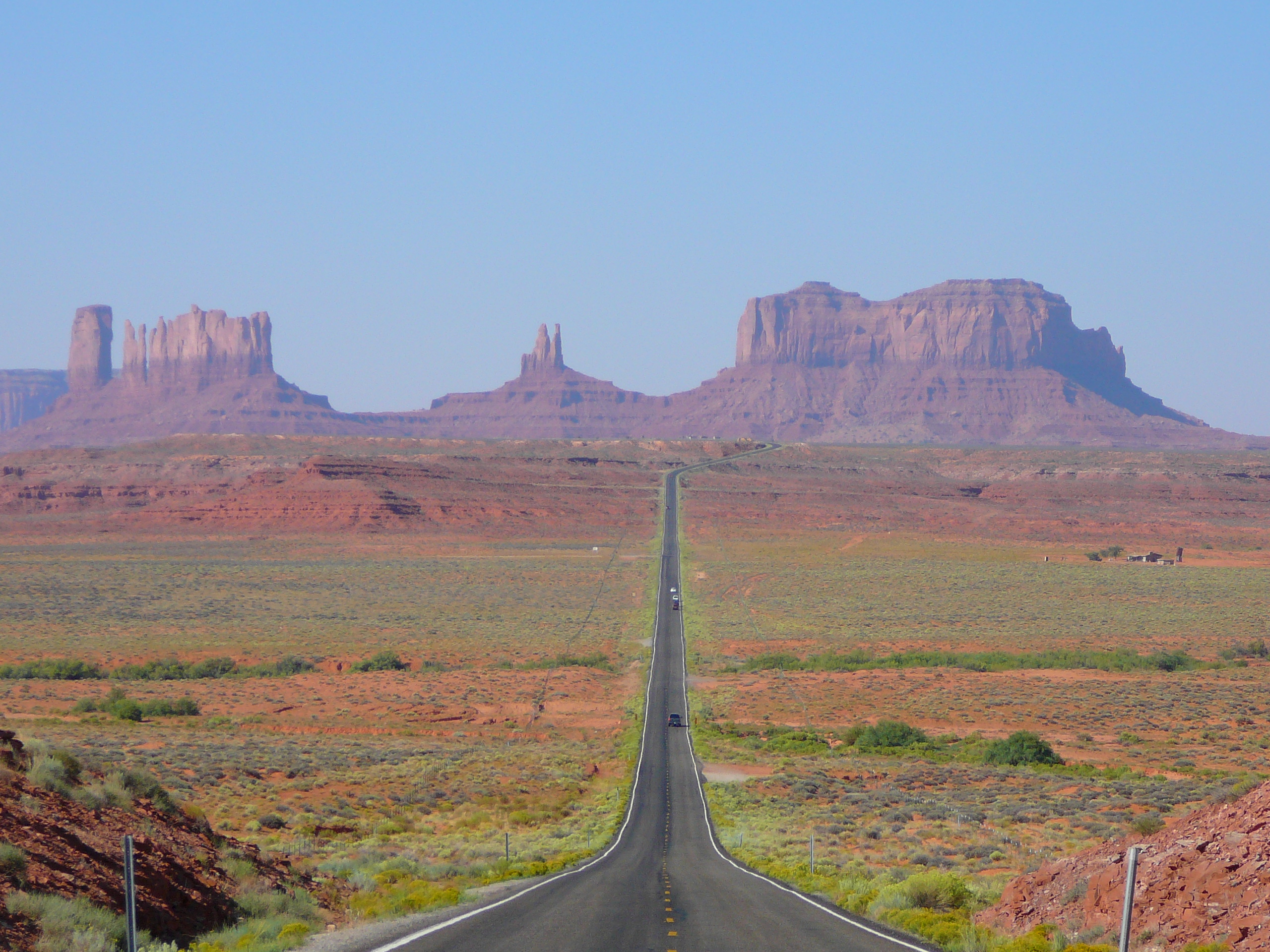Sunrise at Monument Valley 

 Monument Valley road
Monument Valley road
Beautiful sunrise 

Location : Arizona- Utah state line, U.S.A.
The area is
part of the Colorado Plateau. The elevation of the valley floor ranges from
5,000 to 6,000 feet (1,500 to 1,800 m) above sea level. The floor is
largely siltstone of the Cutler Group, or sand derived from it, deposited by the
meandering rivers that carved the valley. The valley's vivid red color comes
from iron oxide exposed in the weathered siltstone. The darker,
blue-gray rocks in the valley get their color frommanganese oxide. The buttes are clearly stratified, with three principal layers. The lowest layer is
the Organ Rock Shale, the middle is de Chelly Sandstone, and the top layer is the Moenkopi Formation capped by Shinarump
Conglomerate. The valley includes large stone structures including the
famed "Eye of the Sun".
In tourism
industry, Monument Valley is officially a large area that includes
much of the area surrounding Monument Valley Navajo Tribal Park, a
Navajo Nation equivalent to a national park. Oljato, for example, is also within the
area designated as Monument Valley. Visitors may pay an access fee and drive
through the park on a 27 km dirt road about two to three hour trip. Parts
of Monument Valley are accessible only by guided tour, such as Mystery Valley
and Hunts Mesa.

Panorama in the winter
Other than that, for the
climate Monument Valley experiences a desert
climate with cold winters and hot summers. While the summers may be hot, the
heat is tempered by region's aridity and high altitude. Although the valley
experiences an average of 54 days above 90 °F (32 °C) annually,
summer highs rarely exceed 100 °F (38 °C). Summer nights are
comfortably cool, and temperatures drop quickly after sunset. Winters
are cold, but daytime highs are usually above freezing. Even in the winter,
temperatures below 0 °F (−18 °C) are uncommon, though possible.
Monument Valley receives an occasional light snowfall in the winter, however,
it usually melts within a day or two.
No comments:
Post a Comment